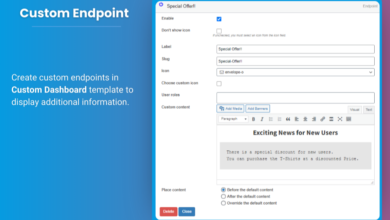5 Ways 3D Modeling Can Supercharge Your Business Growth

In today’s fast-paced digital world, businesses are constantly seeking innovative ways to stay ahead of the competition. One tool that has proven to be a game-changer across various industries is 3D modeling. From product design to marketing and even virtual simulations, 3D modeling opens up a world of possibilities for businesses to grow and scale efficiently.
In this post, we’ll explore five powerful ways 3D modeling can supercharge your business growth, whether you’re in manufacturing, architecture, healthcare, or any other industry.
1. Enhance Product Development with 3D Modeling
Save Time and Reduce Costs with Precise Prototypes
In product development, the ability to quickly create, test, and revise prototypes is key to success. 3D modeling allows businesses to visualize their products with incredible precision before ever creating a physical prototype.
This not only reduces the need for multiple costly prototypes but also speeds up the development process.
With 3D modeling, designers and engineers can identify potential issues early in the design phase. Adjustments can be made in real time, ensuring the final product is both functional and aesthetically pleasing.
By improving the accuracy of designs, businesses can avoid costly mistakes and bring products to market faster.
Improve Collaboration Across Teams
Another significant benefit of using 3D modeling in product development is improved collaboration. Teams from different departments—engineering, marketing, sales—can all view the same 3D models, making it easier to provide feedback and make informed decisions.
This streamlines the development process, fosters better communication, and results in a better end product.
2. Create Impactful Marketing and Advertising Campaigns
Visualize Your Products in 3D for Engaging Campaigns
When it comes to marketing and advertising, visuals play a crucial role. Static images are no longer enough to capture the attention of modern consumers. 3D modeling enables businesses to create dynamic, engaging visuals that help potential customers understand products on a deeper level.
For example, instead of using flat, two-dimensional product images, businesses can now offer interactive 3D models that allow users to explore products from every angle. This not only enhances the user experience but also increases the chances of converting leads into sales. With 3D modeling, your products can stand out in a crowded marketplace.
Boost Engagement with Immersive Experiences
Beyond static 3D images, many businesses are now incorporating 3D modeling into augmented reality (AR) and virtual reality (VR) experiences. These immersive marketing tactics allow customers to virtually “try before they buy,” whether it’s visualizing how furniture looks in their living room or test-driving a virtual car.
Such experiences not only captivate audiences but also build brand loyalty, as customers appreciate the added value of personalized, interactive experiences.
3. Streamline Manufacturing Processes
Increase Efficiency with Virtual Simulations
Manufacturing is another area where 3D modeling has the potential to drive significant growth. By creating detailed virtual models of products and components, manufacturers can simulate production processes and identify bottlenecks before the actual manufacturing begins. This leads to a more efficient workflow, saving both time and resources.
3D modeling also enables businesses to optimize designs for manufacturability, ensuring that products can be produced with fewer materials or at a lower cost without sacrificing quality. This kind of innovation is crucial for staying competitive in industries where margins are tight.
Reduce Errors and Minimize Waste
One of the primary advantages of 3D modeling in manufacturing is the reduction of human error. Traditional 2D drawings can sometimes be misinterpreted, leading to costly mistakes during production. 3D modeling eliminates this issue by providing clear, unambiguous representations of products, helping manufacturers avoid costly errors and minimize waste.
By optimizing both the design and production processes, businesses can not only reduce costs but also enhance sustainability efforts, which is increasingly important to both consumers and investors.
4. Optimize Architectural and Construction Projects
Visualize Complex Designs with Accuracy
The architecture and construction industries have greatly benefited from advancements in 3D modeling. Complex building designs can now be visualized with incredible accuracy, allowing architects and clients to see exactly how a project will look before construction begins.
This high level of visualization helps stakeholders make informed decisions, reducing the chances of miscommunication or misunderstandings. With 3D modeling, changes can be made quickly, and potential design flaws can be addressed early, ensuring the project stays on time and within budget.
Improve Client Presentations
For construction firms, client presentations are an essential part of winning contracts. 3D modeling allows businesses to present their projects in a visually compelling way, making it easier for clients to understand the scope and scale of a proposed design. This increases the chances of securing new projects and helps businesses grow by building trust with clients.
By integrating 3D modeling into presentations, construction firms can also showcase multiple design options, offering clients more flexibility and enhancing their overall experience.
5. Revolutionize Healthcare with 3D Modeling
Accelerate Medical Device Innovation
The healthcare sector is leveraging 3D modeling to revolutionize the development of medical devices and procedures. With 3D, medical professionals can create precise digital replicas of organs, bones, and other body parts. This allows for better planning and testing of medical devices, ensuring they are tailored to patients’ unique anatomical structures.
In addition, 3D speeds up the innovation process for new medical technologies. Companies can simulate how devices will perform under real-world conditions, reducing the time it takes to bring new innovations to market. This leads to better patient outcomes and drives growth in the medical industry.
Personalize Patient Care
Beyond device development, 3D modeling is also being used to improve patient care through personalized treatments. Surgeons can use 3D-printed models to plan complex surgeries, ensuring greater precision during operations. This reduces the risk of complications, shortens recovery times, and ultimately enhances patient satisfaction.
As the healthcare industry continues to evolve, 3D will play an increasingly important role in providing personalized, high-quality care that meets the specific needs of individual patients.
Conclusion: 3D Modeling Is a Growth Driver Across Industries
In conclusion, 3D modeling is a powerful tool that can supercharge your business growth in numerous ways. Whether you’re enhancing product development, creating immersive marketing campaigns, optimizing manufacturing processes, visualizing complex architectural projects, or innovating in healthcare, 3D offers countless benefits that can give your business a competitive edge.
By leveraging 3D , businesses can reduce costs, increase efficiency, and provide customers with engaging, personalized experiences that drive loyalty and sales. As technology continues to advance, the potential applications for 3D will only expand, making it an essential asset for businesses across industries.
If you’re looking for expert 3D services, consider working with 3D Modeling India, a leader in the field that can help take your business to the next level. With cutting-edge technology and a team of skilled professionals, 3D Modeling India is well-positioned to meet the needs of businesses looking to innovate and grow in the digital age.
For Read More Blog You Can Explore this Website Also- 10 Key Benefits to Hire Website Developer from India




